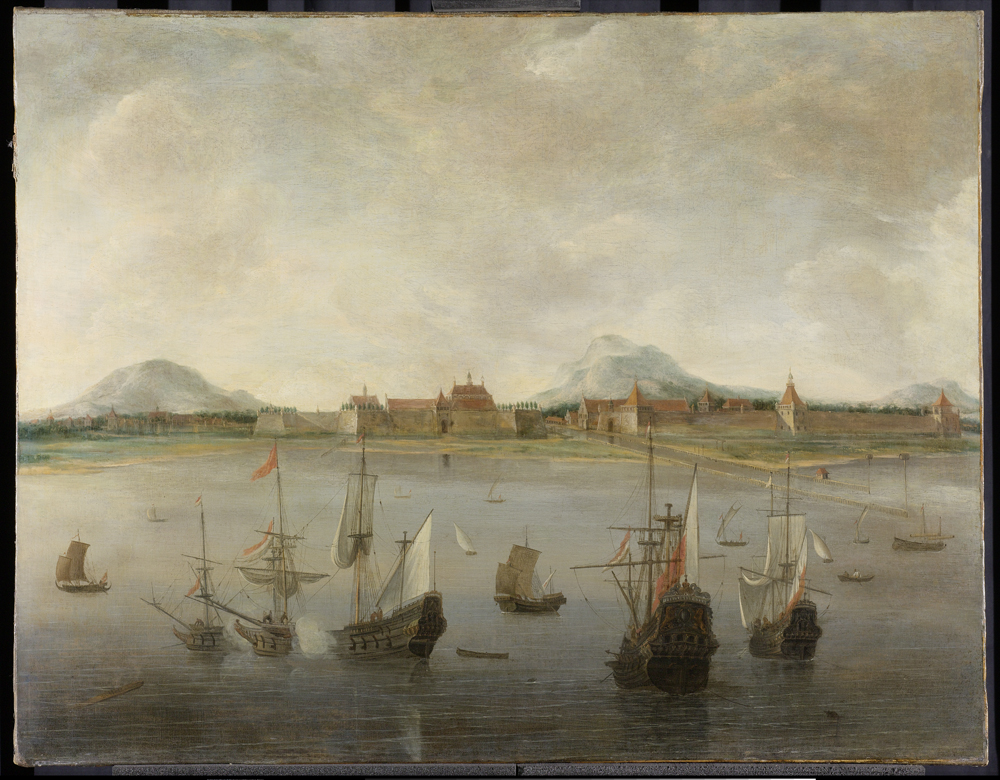Stop 10 - Dubbels, view of Batavia
This view of the Company's key hub in the Asian region, the city of Batavia (modern day Jakarta, Indonesia), shows ships from the Company's fleet in the roads, busily going about the trading that fuelled this powerful international organisation.
An urban community had existed in this area long before Prince Jayawikarta granted permission for the Company to construct storage facilities and houses there in 1610. His friendship was important to the Company's initial ambitions in the area, but as these grew, the trust that this relationship implied would be broken. By 1619, Company officials had formed a new alliance with the prince's rival, Pangeran Ratu, the ruler and later Sultan of Banten. The Company seized the whole township by force and established Batavia, a city that would become a melting pot of international cultures under Company control.
In the foreground of the image, we see Company vessels flying the Prinsenvlag. Its horizontal stripes of orange, white and blue engendered powerful emotions of pride for contemporaries as they represented the recent struggle of the Dutch Republic to gain religious and political freedoms — and independence from Spanish Habsburg rule.
Orange, still widely recognisable today as the sporting colour of the Dutch and, in some regions of the world, a symbol of political Protestantism, reflected the important relationship of William of Nassau, Prince of Orange with the fledgling nation, and a legacy of enduring loyalty to his memory. He had committed his political future to leading the Dutch provinces against the Spanish in the later sixteenth century, and had lost his life as a result.
The white was understood to symbolise the freedom gained by the provinces that had broken away from Spanish Habsburg control, and the blue represented the County of Nassau, now part of Germany where William's ancestral lands lay.
In such ways, the House of Orange-Nassau was intimately tied to the foundation and future of the new Republic and its endeavours internationally through the Company, including in Australia. It was the Prinsenvlag that Abel Tasman planted on a beach in Tasmania in 1642 and after this dynasty and its family members that the Nassau River at Cape York and other sites were named.


